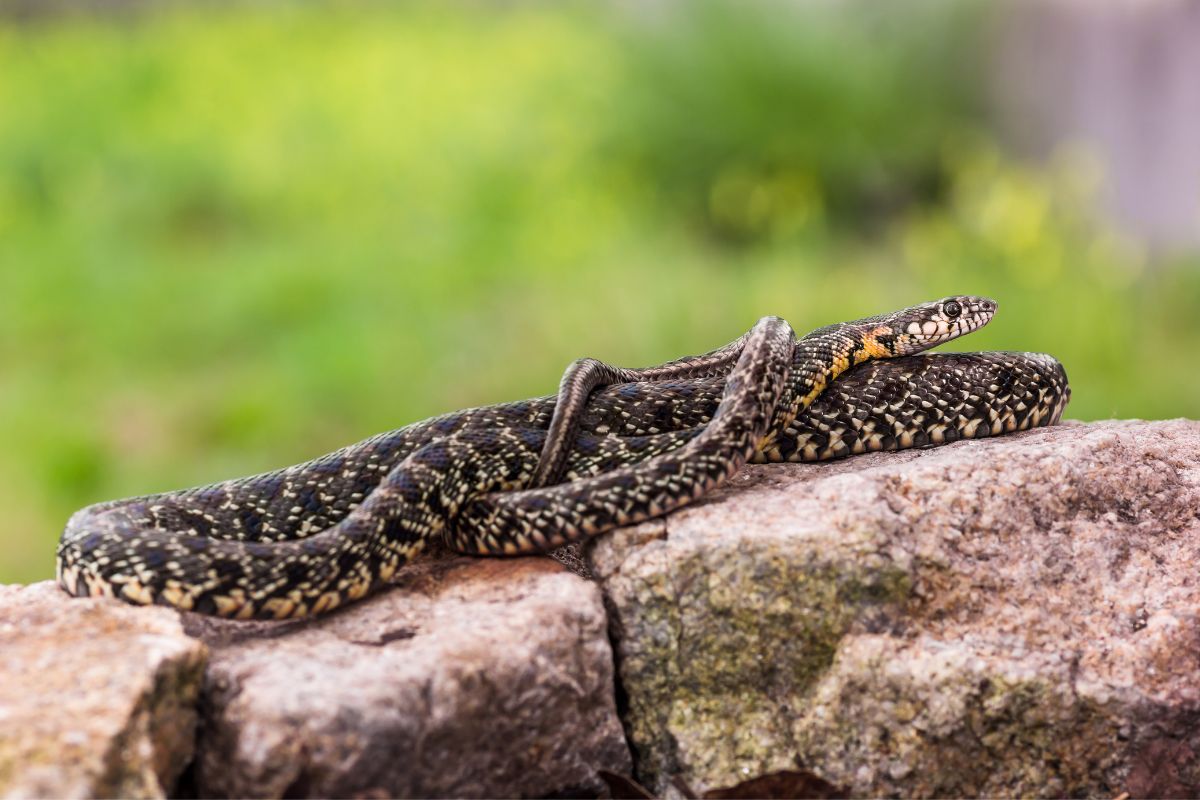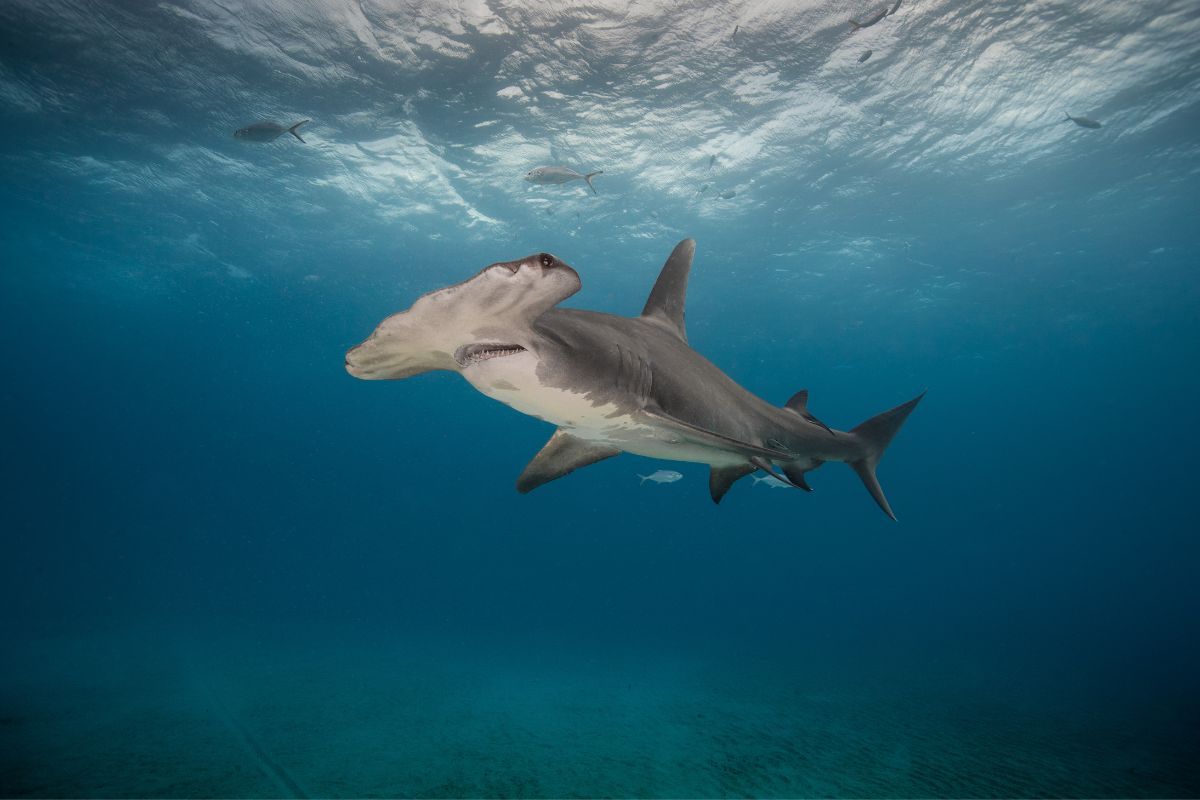Hawaii is known for its beautiful beaches, lush rainforests, and warm weather. Yet, some visitors might be surprised to hear that Hawaii has also become home to several species of venomous reptiles.
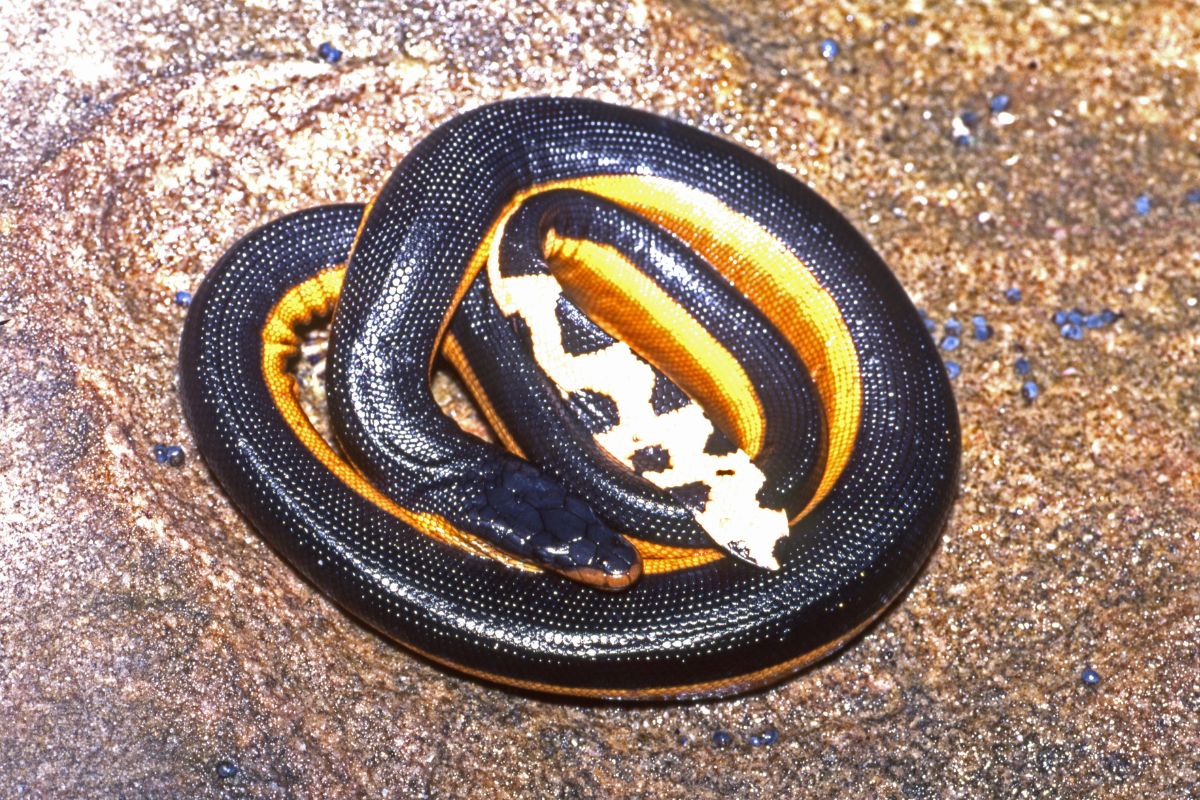
In fact, Hawaii is considered to be one of the top snake habitats in the United States.
There are a huge number of species of snakes found in Hawaii, ranging from harmless lizards to deadly cobras. The state even hosts the largest reptile exhibit in North America at the Honolulu Zoo.
Many people believe that Hawaii is free of poisonous snakes because they don’t see them. However, these creatures are often hiding under rocks or inside trees.
If you want to enjoy Hawaii without being bitten by a snake, you should always wear boots and long pants when hiking.
Hawaii And Snakes
Hawaii is one of the most diverse places on earth. With over 8,000 species of plants and 7,000 species of birds alone, it is home to some of the world’s rarest creatures.
The closest snake to Hawaii is the green tree python, found in Southeast Asia. However, even though they live near each other, the two species are very different.
The green tree pythons are large constrictors that eat small mammals and birds.
They are not venomous and are harmless to humans. On the other hand, the Hawaiian boa constrictor is a smaller snake that lives in trees and eats lizards and frogs.
Unlike the green tree python, the Hawaiian boa is highly poisonous and capable of killing people.
Yellow Bellied Sea Snakes
A yellow-bellied sea snake washed up onto a Hawaiian island beach. This species is known for being able to survive in both warm and cold water temperatures. The snake was discovered on Kauai Island in Hawaii.
The snake’s upper body is dark or brownish-black, while the lower half is light yellowish. Its tail is long and slender, and it has large eyes.
Blind Brahminy Snakes
The Brahminy Blind Snake is a small, harmless, nocturnal species of snake found throughout India, Pakistan, Sri Lanka, Thailand, Cambodia, Laos, Vietnam, China, Japan, Indonesia, Malaysia, Singapore, Philippines, Papua New Guinea, Australia, Fiji, Guam, Hawaii, Mexico, and Central America.
This snake is known to live underground in damp soil, leaf litter, rotting wood, and compost piles where it feeds mainly on insects such as cockroaches, beetles, grasshoppers, crickets, moths, centipedes, millipedes, spiders, scorpions, slugs, snails, worms, and even frogs.
The Brahminy blind snake, scientifically named Typhlops brumatus, is the smallest snake in the world, measuring about five inches long. This tiny creature lives in the tropical rainforests of India and Sri Lanka.
It eats insects and spiders and lays eggs that hatch into identical copies of itself. In fact, there are so many of these little creatures that it is thought that one female snake laid some 20 million eggs.
What Other Snake Breeds Can Be Found In And Around Hawaii?
Hawaii is home to many different kinds of animals. Some of them are native, while others arrived here by accident. There are even some exotic creatures like snakes that came to the islands because of people.
The state is known for having one of the most diverse ecosystems on Earth. However, it is important to note that the diversity of life does not mean that everything is safe.
Some snakes are considered invasive species and pose a threat to the local environment. These include Burmese pythons, boa constrictors, coral snakes, and Russell’s vipers.
These reptiles do not belong to the same family as rattlesnakes. Instead, they belong to the python family.
There are several types of snakes that live in Hawaii. Most of them are harmless, but some of them can bite people.
Snakes are usually active during the day, although some of them are nocturnal. They are cold-blooded and therefore cannot regulate their body temperature very well. This makes them vulnerable to heat stroke.
Boa Constrictor
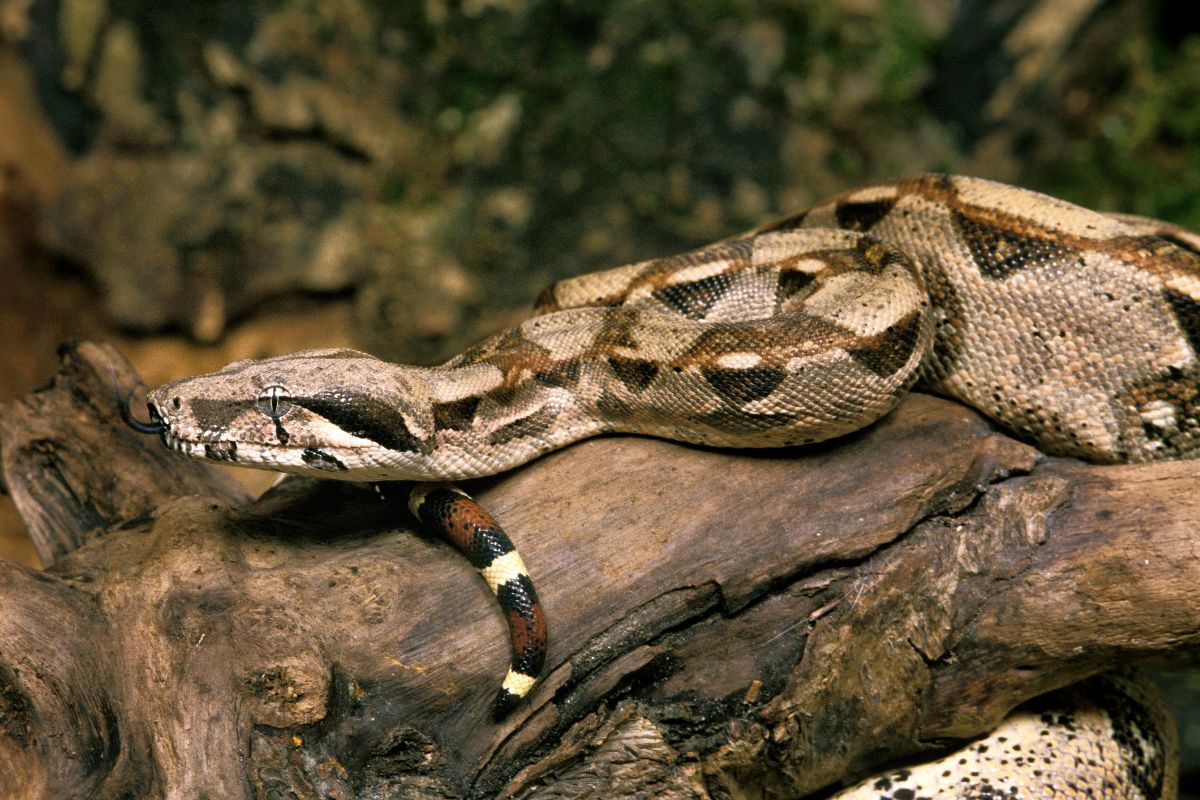
The boa constrictor is one of the most popular exotic pets around the globe. While some people keep them as house pets, others enjoy keeping them as part of their collection.
These snakes are often kept as pets because they are relatively easy to care for and don’t require much space. Most people keep them in small cages or terrariums.
There are four subspecies of Boa constrictor of different colors and patterns:
- Imperator boa (Boa imperator): This species is the largest of the boas, reaching up to 7 feet long. Its coloration varies from black to dark brown.
- Pindamonhangaba boa (Boa pindamónhangába): This species is smaller than the previous one, growing up to 4.5 feet in length. Its coloration ranges from yellowish green to olive green.
- Yellow-bellied boa (Boa flavigula): This species grows up to 3.6 feet in length and has a bright yellow belly.
- Black-footed boa (Boa nigricollis): This species reaches up to 5 feet in length and is distinguished by having black feet.
Ball Python
A pretty, colorful, and non-venomous snake, Ball Pythons are often kept as pets. They are native to Africa and live in grasslands. They eat birds and small rodents.
Although keeping Ball Pythons is strictly illegal in Hawaii, people do reckless things like smuggling them for their collections, even though they know that they can endanger the environment if they escape or the owners let them go.
And it happens – they escape, or the owners just don’t want them anymore, or for some other reason.
Garter Snakes
The garter snake is a harmless species of colubrid snake found throughout much of North and Central America. Its common names include garter snake, striped racer, and striped water snake.
The name “garter snake” refers to the distinctive patterning of the dorsal scales; the banded appearance of the snake resembles garters worn around the neck.
The term “striped racer” originates from the fact that the snake’s coloration often consists of alternating bands of black and white.
The most commonly recognized form of the garter snake is the greenish-brown, speckled snake. This variety is known locally as the “green racer”.
Brown Tree Snakes
The brown tree snake is a nocturnal species of snake found throughout. They live in trees and spend much of their day basking in the sun. Their diet consists mainly of lizards and frogs.
They are easily recognized by their distinctive pattern of black stripes running down their backs. These patterns vary greatly among individuals, making identification difficult.
However, some animals do exhibit consistent markings, such as those on the belly and sides.
They are characterized by having a wide head relative to their bodies, and large eyes with vertical pupils.
Their coloration varies widely depending on geographic location; they range from light tan to dark brown, often with a lighter belly. Some populations are blackish, while others are almost entirely white.
Like many snakes, they feed primarily on small animals such as lizards, frogs, mice, rats, and birds.
However, they have been known to prey upon larger vertebrates including domestic poultry, dogs, cats, and humans. They are considered pests in parts of Southeast Asia because of their ability to climb and enter homes.
Rainbow Boa
There are 5 different types of Rainbow Boas, each with its own distinct coloring and markings. They are found throughout Australia, New Zealand, and South America.
Each type of Rainbow Boa has its own unique characteristics and behaviors.
The Rainbow Boa is one of the world’s largest venomous snake species. They are typically around 2 m long, however, some specimens grow up to 4 m long.
They are very docile snakes and do not pose much threat to humans. However, it is important to note that they are still dangerous and should never be handled without proper training.
They eat small mammals such as rats and mice, lizards, frogs, birds, fish, and even insects. They are known to prey upon native wildlife including kiwis, echidna, and possums.
Corn Snakes
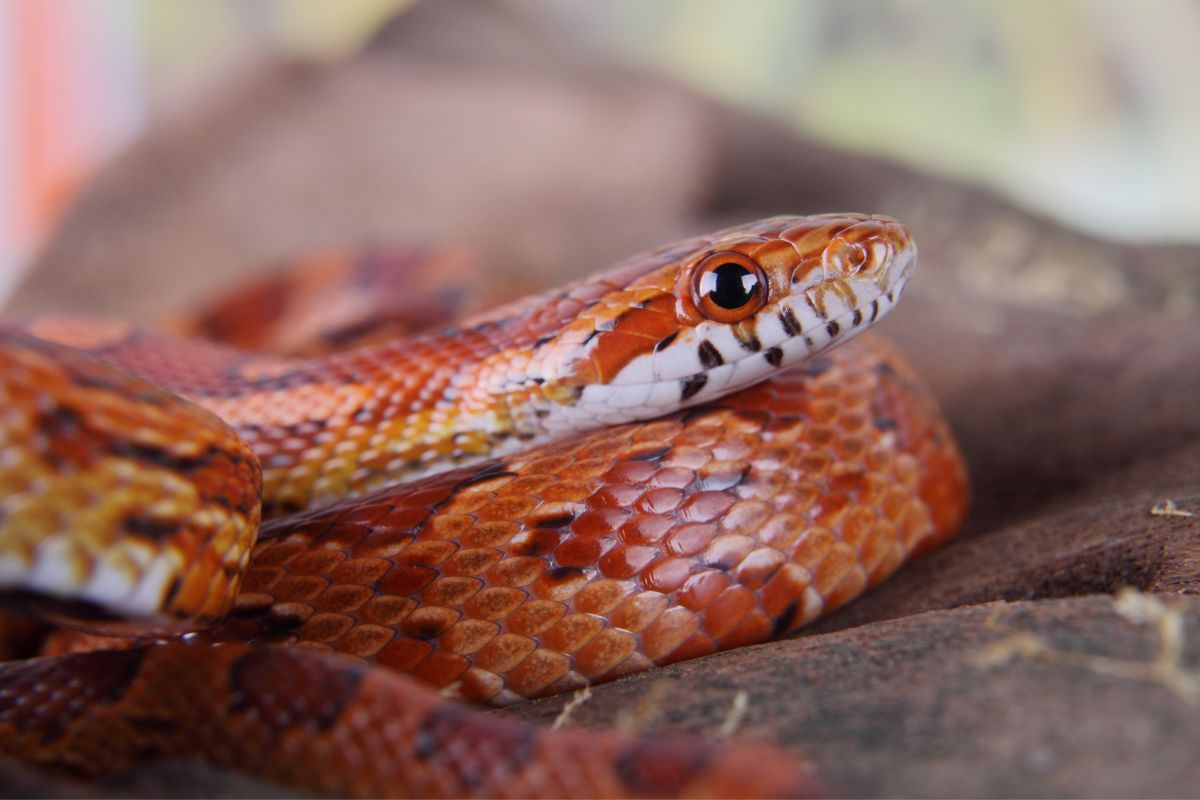
The corn snake is a slim variety of snakes and is recorded to reach up to 12 feet in length. Its signature mark is the red dots/diamond-shaped patterns on its back, surrounded by a bright orange coloring.
They are commonly found in North America, Central America, South America, and parts of Africa.
The corn snake eats small mammals such as mice and rats but has also been seen eating birds’ eggs. It is considered one of the most docile snakes around and is generally harmless to humans.
The corn snake is one of several species of snakes native to Hawaii. It is a slender variety of snake that reaches up to 72 inches in total length.
Even though there are no reports of people being bitten by a corn snake, they do bite humans occasionally.
A few cases have been reported in the United States, including one case in Florida in 2016. There is even a report of a man in Australia who survived a corn snake bite.
What Exactly Happened In Guam?
In recent years, Guam has been hit hard by invasive species such as the Asian tiger mosquito, the brown tree snake, and the Asian long-horned beetle.
These introduced species are now considered major threats to native wildlife and plants. In fact, Guam has lost a great portion of its native animal species due to extinction.
The introduction of the brown tree snake into Guam occurred during the 1950s when the reptile was brought to the island aboard cargo ships from New Guinea.
Once there, the snake began breeding rapidly and soon became a top predator, sitting atop the food chain. Today, the population of the brown tree snake has grown to over 10 million individuals.
Are There Many Brown Tree Snakes In Hawaii?
The brown tree snake is a viper species native to Australia and New Guinea. They are highly venomous and capable of killing people.
In fact, it is responsible for about half of all deaths caused by snakes in Australia. However, the brown tree snake is rarely seen in the United States.
However, there are some reports of brown tree snakes being smuggled into Hawaii. These snakes are usually brought in by dog owners who want to train their pets to find them.
When the pet finds the snake, it bites the owner, causing severe pain. This allows the snake to escape.
On one hand, these snakes can be very sneaky. For example, they can hide in small crevices where people cannot see them.
On the other hand, human beings are often careless and stupid. For example, they smuggle them across borders without realizing how dangerous they actually are.
In addition, the brown tree snake population is growing rapidly in Guam. If it continues to grow unchecked, it could become a threat to the ecosystem of Hawaii.
Are There Any Poisonous Snakes In Hawaii?
One out of every four snakes found in Hawaii is venomous. And while you might think that it’s easy enough to avoid getting bitten by a snake, the truth is that many people do get injured by them.
In fact, according to the National Park Service, there have been over 2,500 reported cases of human bites by snakes since 1900, including several deaths.
The most common type of bite occurs when a person steps on a snake that is sleeping or hibernating. This causes the snake to strike out, usually with its mouth.
If a snake strikes out at someone, it is likely because it feels threatened. A snake’s fangs are designed to inject poison into prey animals, such as birds and mammals.
However, some species of snakes use their fangs to deliver a painful sting rather than inject poison.
If you find yourself face-to-face with a snake, you should never try to pick up a snake. Instead, quickly move away from the snake and call 911.
Do not attempt to kill the snake yourself. You could accidentally injure yourself or cause the snake to attack you.
Poisonous Snakes In Hawaii
Brown tree snakes are one of the most dangerous invasive species in the world. They’ve been known to kill people, pets, livestock, and even wildlife.
In fact, they’re responsible for wiping out nearly 80% of Guam’s native bird population.
Fortunately, there haven’t been any confirmed sightings of brown tree snakes in Hawaii since 2010, but that doesn’t mean you shouldn’t take precautions.
Yellow-bellied sea snakes are another type of venomous snake that’s often seen around the islands’ coasts. However, unlike brown tree snakes, yellow-bellied sea snakes aren’t considered a threat to humans.
Still, they’re best avoided because they tend to live in deep water where divers might accidentally step on them.
The yellow-bellied sea serpent is found throughout the Pacific Ocean and is known for being able to produce a deadly neurotoxin that can paralyze its prey.
This makes it very dangerous to humans, too. In fact, according to the National Park Service, it’s responsible for about 20 deaths each year.
While the brahminy blind snake is small, it can still pack a punch. Its bite causes pain and swelling, but it won’t kill you. Still, experts say that it could cause serious problems if someone gets bitten.
How Exactly Did Snakes Get To Hawaii?
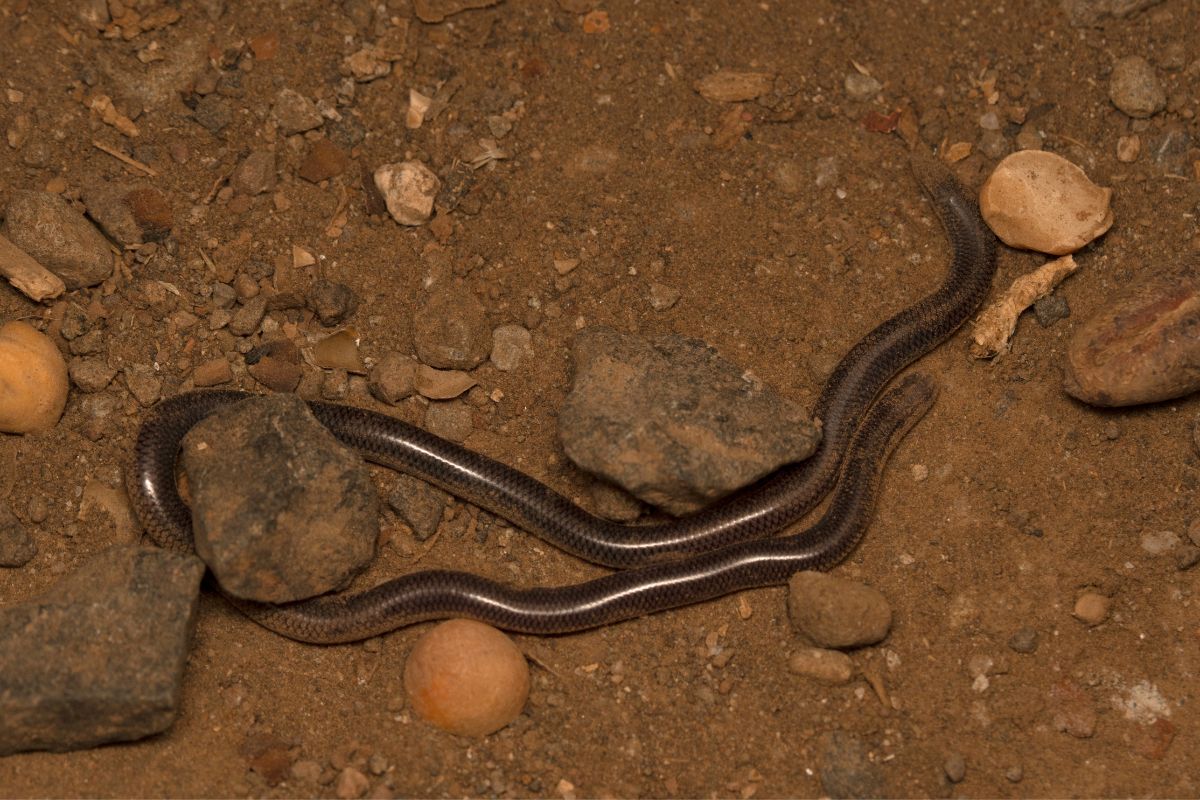
Snakes are one of the few animals that make it to Hawaii without human intervention. Most arrive via ship or plane, although some live here naturally. Yellow-bellied sea snakes are the only species native to Hawaii.
They usually swim over from neighboring islands like Kauai, Oahu, and Maui. But there may also be black market pet traders who import snakes to keep as illegal pets, despite the serious risks involved.
The agriculture department recently imported four brown tree snakes into Hawaii for the special purpose of training four specially trained dogs to detect snakes that might invade the state via passengers or freight.
This is part of a larger effort to help prevent invasive species from entering the islands.
Brown tree snakes were responsible for devastating Guam’s bird population when the reptiles invaded the island in the 1970s.
They are now considered one of the world’s most dangerous animals because of their ability to kill people and pets.
The state Department of Land and Natural Resources says that anyone found importing snakes could face fines up to $50,000 and six months in jail.
What About Other Creepy Insects And Reptiles In Hawaii?
Hawaii isn’t just home to some scary insects; it’s also home to some creepy-crawly critters. From spiders to snakes, here are five things you probably didn’t know about Hawaii’s creepy crawlies.
1. Centipedes
There are three kinds of centipedes found in Hawaii.
While most people associate centipedes with being poisonous, the red-headed species is actually quite harmless. However, the red-headed Scutigera does carry a toxin that causes severe pain.
2. Red Velvet Ants
Red velvet ants are commonly called cow killers because they tend to feed on cows and horses. They’re also known as fire ants because they like to build nests near fires. If you see one, don’t touch it—they can deliver a nasty sting.
3. Stone Fish
Stonefish are usually found in warm waters around the world, but they’ve recently been spotted off the coast of Oahu. Their venomous stings aren’t deadly, but they do hurt.
Does Hawaii Have Any Other Dangerous Or Poisonous Insects And Reptiles?
Hawaii has some pretty interesting creatures living here. From giant land crabs to giant slugs, they’ve got plenty of weird critters to keep them busy.
But one thing that isn’t often talked about is the danger posed by spiders.
While most people think of spiders as harmless little things, there are actually several different kinds of spiders that pose a threat to humans. Some even have venom powerful enough to kill a person within minutes.
The Western and Southern Black Widow Spider and the Brown Widow are both found throughout the islands. Both species have been known to bite people, though the Brown Widow tends to do so much less frequently.
They’re also very similar in appearance, making it difficult to tell them apart without looking closely. If you find yourself coming into contact with either of these spiders, don’t panic.
You’ll likely feel pain and swelling around the area where the spider bit you, but you shouldn’t experience anything worse.
If you want to avoid getting bitten by a spider, make sure you know what type of spider you’re dealing with. Most people assume that because a spider looks like a black widow, it must be the same species as the infamous “widow.”
This is true for the Western and Southern Black Widows, but not the Brown Widows. Brown widows tend to live closer to the ground and are smaller than the other types of black widows. They also tend to be darker, making them easier to spot.
While the brown widow doesn’t usually cause serious injuries, it does carry a risk of infection. So while you might not die from a bite, you could end up with something nasty like tetanus.
To prevent this, wash the wound thoroughly with soap and water and seek medical attention immediately.
Final Thoughts
There’s no need to fear the insects or reptiles of Hawaii. In fact, many of them are fascinating and beautiful! The only way to truly enjoy your time in paradise is to learn more about the island’s unique wildlife.
- GOOD TO KNOW BEFORE YOU GO!Dublin, Ireland - August 3, 2023
- What Are The Most Popular Wineries For Views And Tastings On Seneca Lake? - January 3, 2023
- When Should You Visit Japan? Check Out The Best Times To Enjoy The Snow - January 3, 2023

